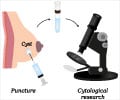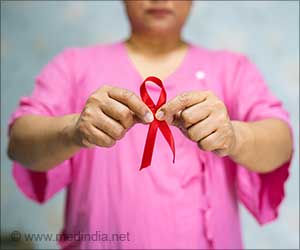Researchers at UC Davis Cancer Center have discovered that the HER2 gene itself is the key behind the aggressiveness of HER2-positive breast cancer.
Researchers at UC Davis Cancer Center have discovered that the HER2 gene itself is the key behind the aggressiveness of HER2-positive breast cancer.
They found that HER2 advances tumour growth by shutting down its own regulator gene, labelled LRIG1 and commonly called "Lig-1".The new study comes in line with recent research showing that Lig-1 limits the growth-promoting signals of HER2.
Now, the researchers have found that the regulator is significantly suppressed when compared to healthy breast tissue.
"This suppression assists HER2 in its own over-expression and in driving the growth of cancer cellsHER2 is clearly taking an active role its own ability to be successful in promoting cancer," said Colleen Sweeney, associate professor of biochemistry and molecular medicine and senior author of the study,
The researchers claimed that the study results could lead to new treatments aimed at restoring or replacing functions of the regulator.
First, the researchers studied mouse models of breast cancer with genomes that carry extra copies of HER2 and found an excess of HER2 protein in the resulting tumours, but it was not over-expressed in adjacent healthy tissues that also carried extra copies of the HER2 gene.
Advertisement
Then, the researchers compared Lig-1 levels in the mouse models, and found that Lig-1 was greatly diminished in tumor tissues when compared to the normal tissues.
And they encountered same results in the human breast cancers that they found in mice.
In fact, 60 percent of 67 tumors analyzed showed a loss of the Lig-1 protein and its levels were, on average, 33 percent lower in tumor tissue versus healthy breast tissue.
"There was a clear inverse relationship between Lig-1 and HER2. When we depleted Lig-1, cancer cells grew almost 50 percent faster, while the opposite occurred when we restored Lig-1 to healthy levels. We also found that depleting HER2 levels resulted in an increase in Lig-1 levels, while activating HER2 resulted in Lig-1 depletion," said Sweeney.
According to Sweeney, the results may help explain why, even among patients with HER2-positive breast cancer, the disease process can vary dramatically.
"We think Lig-1 levels could be linked to prognosis. Patients with more of the regulator gene’s functions intact are going to have a better outcome than those with less," she said.
The study is appearing in the current issue of Cancer Research.
Source-ANI
SRM















